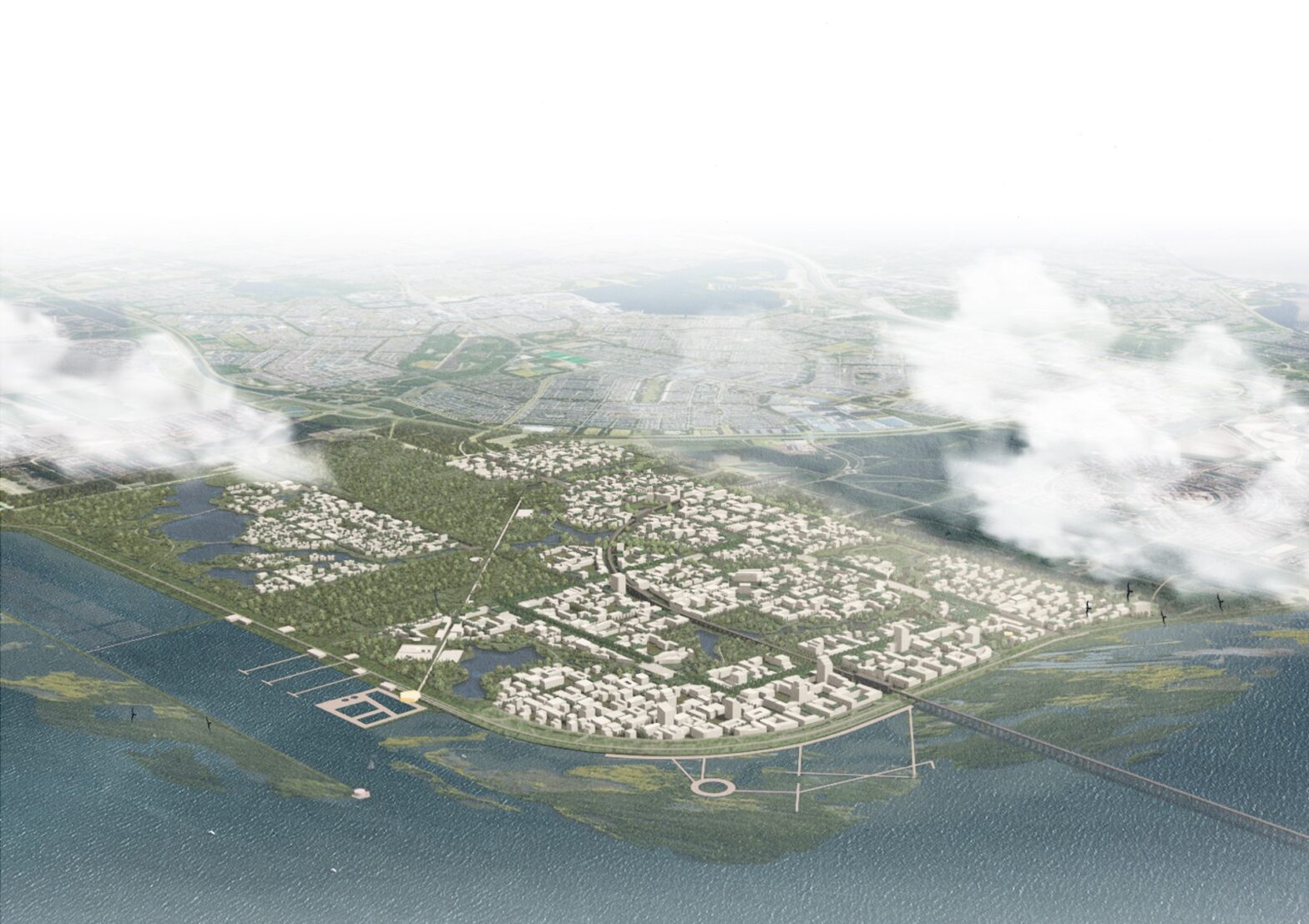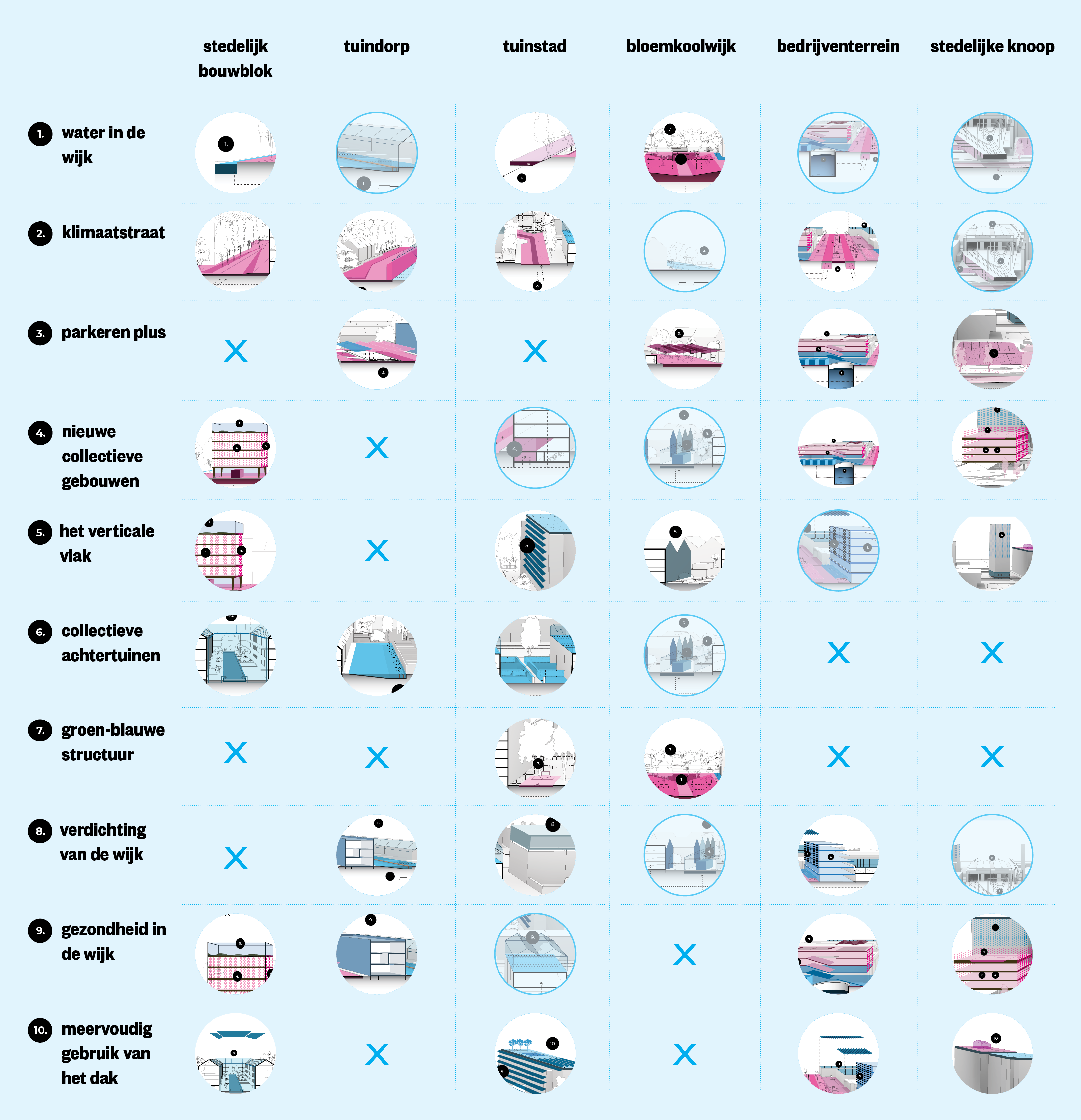The Road to Integralia
Roadmap for an integrated approach to urban challenges by the City Deal Public Space







There is a place where the public space invites walking, cycling, and meeting. Full-grown city trees and lush vegetation of plants and flowers provide shelter to people, animals, and insects. Rainwater is collected in wet periods under streets and squares so that the soil does not dry out in dry periods. In the soil, the vital infrastructure for energy, communication, and (waste) water is neatly bundled so that they do not interfere with tree roots and fungal networks.

This place is called Integralia. A group of spatial designers, administrators, policymakers, asset managers, area directors, and many other professionals involved in the design, realization, and management of the upper and underground public space has united in the City Deal Public Space in recent years. Professionals from twelve municipalities, four ministries, and various knowledge institutions and platform organizations have worked for three years on the realization of Integralia. That turned out to be more difficult than expected.

The public space is under a lot of pressure. The population is increasing and cities are being further densified. Through the more intensive use of our cities, the public space wears out faster. As a result: open streets that, as soon as the work is finally finished, open again a little later, with the associated annoyance of residents. In addition to the permanent maintenance of the city, several major tasks need to be tackled. Climate adaptation, energy transition, the transition to a circular economy, and strengthening biodiversity.
Everything comes together in an already stuffed public space. Parked cars compete with space for meeting, heat nets with tree roots, and transformer houses with playgrounds. The complexity is increased because many of the space claims have a different (problem) owner: residents, municipalities, grid operators, and suppliers of gas, water, electricity, and heat all have a different need, seeing is not infrequently in conflict with the needs of others.

Just as the replacement of a sewer in old age would rather not be delayed, global warming, an imminent shortage of raw materials and the disappearance of plant and animal species do not. Without an integrated approach, we will never succeed in tackling all these tasks in time. Without an integrated approach, the various actors continue to fight for every inch of public space. Without an integrated approach, the excavation damage only increases. Without an integrated approach, the management and maintenance of the above- and underground public space becomes unaffordable. Without an integrated approach, the nuisance for residents will only increase. In short, without an integrated approach, Integralië remains a utopia.
Fortunately, there is perspective. The frontrunners within the City Deal Public Space have shown how it can be done and especially how to start tomorrow.
Organize the tactical space
The concept of integrality can be concretized by describing it based on the (scale) level at which work is done. This requires first of all insight into the three scale levels that are considered when working on the city: the strategic, the tactical, and the implementation level. Integrality has a different meaning and practical translation at these different scales.

The biggest challenge lies between the strategic and implementation level, namely at the tactical level. The tactical level forms the link between the integral long-term ambitions and the concrete execution. This is the greatest complexity. Shared ambitions must be translated into concrete interventions that affect their interests for individual stakeholders in the city. This involves weighing different and different interests and the distribution of scarce time, budgets, space, labor and capacity between all these interests.
This consideration creates a dynamic situation that is constantly changing: a comparison with multiple unknowns. It is important to get rid of the unknowns one by one. For example, the replacement task of the urban sewage system or the construction of a heat network can be taken as a starting point to do the redevelopment of the above and underground public space for district. This requires additional investments in a well-thought-out, district-oriented planning process in which space can be used to look together with professional stakeholders and residents for smart combinations of projects. The first examples show that the extra costs of litigation can be recovered in the implementation and in the social added value.
Take control of the subsurface arrangement
When working in public space, the connection between the upper and underground must be considered. The crowds in the subsoil are preconditions for the design of the topsoil. For placing a transformer house, the bend radius of the electricity cables is all-determining. Serious greening of a square or street is only possible if the surface is not already full of cables and pipes. Conversely, all buildings, utilities, trees, and plants have an underground footprint. Healthy soil life ensures better water management and higher absorption of CO2 and nitrogen. To keep the soil healthy, as little hardening as possible must be applied and the soil must be left with peace.
Learn to program
Urban programming is the key to a playing field of different (scale) levels and time horizons between ambition and execution. Space for biodiversity, climate adaptation, and social encounters comes with programming together with ‘hard’ assets such as traffic space and sewerage. The programmer tries to make the most of the scarce time, space, budget, and manpower to achieve the maximum integral result for the city and its residents. This, among other things, means smart coordination between necessary work for management, maintenance, replacement, and adaptation to the underground and above-ground infrastructure, exploiting torque opportunities between different tasks. The urban programmer is an important link in the realization of a public space that fits the future vision of the city.

Collaborate in the entire chain
A good integrated approach stands or falls with good cooperation with all chain partners, from the vision of vital systems to implementation. The municipality is the director in the collaboration between all actors in public space: network operators, housing corporations, water boards, civil society organizations, and residents. This cooperation requires the sharing of goals, ambitions, and interests and drawing up rules and working agreements on the projects and investments. The better this is, the greater the chance of good joint commissioning in the execution.
Be efficient with scarce capacity and resources
Human power is scarce in the world of working in public space and should therefore be used as effectively as possible. By using data about all assets in public space, insight can be gained quickly. By working in a data-driven way, time and work are saved, so that they can be used where they have the most added value: in devising creative solutions for complex issues.
In addition to good professionals, financial resources for investing in an integrated approach are also scarce, while the long-term added value is often obvious. Investment coalitions can also be formed from parties that benefit from better public space such as sewer companies, water boards, non-life insurers and building owners.
Adapt the organization
The integral works must be in the capillaries of every organization involved in the design, realization, management, and maintenance of the above and underground public space. By working on assignment, the approach to the transition challenges is leading instead of the individual policy goals. Closer collaboration between designers, engineers, contractors, and administrators within the organization leads to better projects in the public space. By bringing substantive expertise and decision-making closer together, better integral consideration can be made, also by municipal politics. An integrated approach requires an open and safe working environment in which everyone’s expertise is valued.

Integralia in sight
This integral story offers a perspective on an integral approach that can already be set in motion tomorrow. As a new routine, is the integral approach a fact in all three hundred and forty-two municipalities? Unfortunately not yet.
The individual professionals within these organizations have shown us the way. It was and is often ungrateful work. Integral works rub against existing routines, positions, and responsibilities. These routines, positions, and responsibilities are also underpinned by national standards and rules, which are often interpreted much more straightforwardly than necessary to find the right solution.

Through the efforts of the frontrunners, more and more municipalities and their local partners are starting to realize that a different, integral approach is necessary to deal with all the challenges that come with the living environment.
New rules of the game
However, an integrated approach requires a system change. This means new routines, positions, and responsibilities. The integrated approach also requires new leadership that wants to initiate change and new rules for, for example, the cooperation between the municipality, network operators, and other local partners. Many of these rules of the game stem from national or even European laws and regulations and thus transcend the scope of the municipality, let alone the individual advocate of the public good. Adjusting the rules of the game is not regulated from today to tomorrow and therefore requires a long breath and the intensive involvement of the government. In close collaboration with municipalities and knowledge, it must take the initiative to adapt laws and regulations that prevent an integrated approach.
As a government, knowledge organizations and municipalities continue to put their shoulders together under the upscaling of an integrated approach to the urban transition challenges, these can be given a place in public space, above and underground.
If you want to go fast, go alone. If you want to go far, go together. This spell, often attributed to ancient indigenous knowledge of the African continent, actually says well what we need to do. The journey to Integralia is not a journey you make alone. It is a journey that we must necessarily make together.
Find allies and make the change together. Go to Integralia!

 The city and the country
The city and the country
 Almere Pampus
Almere Pampus
 Climate proof Combinations
Climate proof Combinations